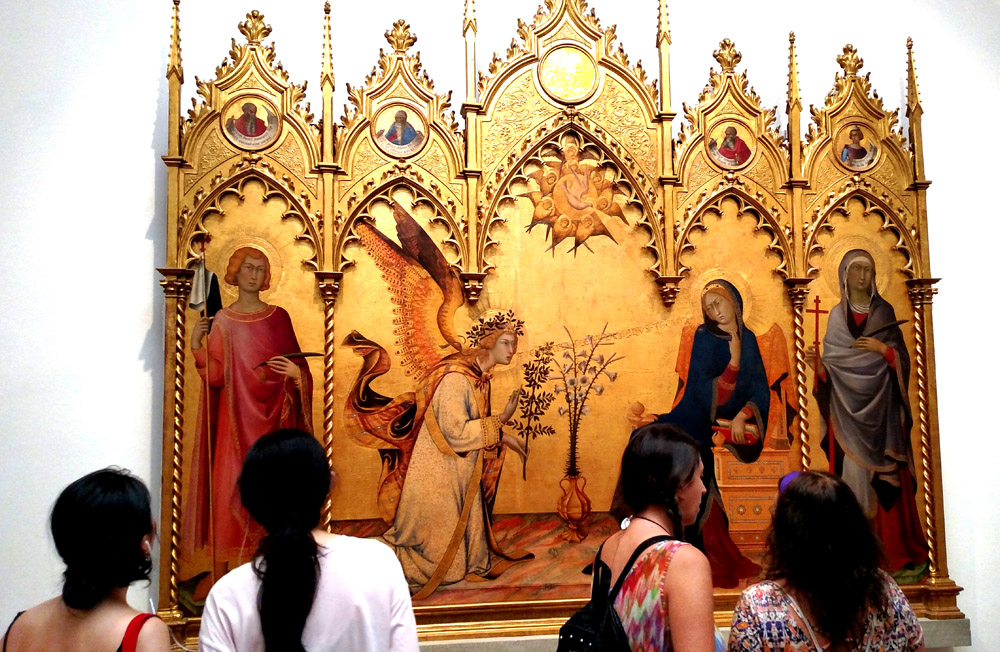Simone Martini and Lippo Memmi, The Annunciation with St. Maxima and St. Ansanus

Siena, 1333
Tempera on wood
Uffizi Gallery
The saint on the right is Maxima of Rome. According to one 14th-century
hagiographer,
a writer of saints' lives
she assisted at the baptism of St. Ansanus and was imprisoned with him in Rome on the orders of the emperors Diocletian and Maximian. Ansanus managed to escape, but Maxima was whipped until she died.1 The palm branch in her left hand is the traditional symbol of martyrdom in western images, and the Greek-style cross in her right hand signifies martyrdom in Orthodox icons.
Ansanus is the saint on the left. On his escape from the Roman prison, he went to preach in Siena, where he was captured and put to death.2 In his right hand he holds a standard with Siena's black-and-white flag. His left hand holds the palm branch of martyrdom.
In other Annunciations the two figures are often separated by architectural features, but it is not uncommon for a vase of flowers to serve this purpose. The flowers on these branches are shaped like trumpets, like those in this diptych from the 14th century. Much less common is the olive branch that the angel offers, a symbol of reconciliation between God and man that goes back to the story of Noah.3 I have seen no other Annunciation with an olive branch, although there is one painting in Venice where the angel offers Mary a garland of roses.
The holy spirit flies down toward Mary in a circle surrounded by seraphim. It must be presumed that the empty circle above it originally had an image of the Father.
View this image in full resolution.
View a detail of the St. Ansanus portrait, with a link to our study of his iconography.
Read more about the Annunciation.
Photographed at the Uffizi by Richard Stracke, shared under Attribution-NonCommercial-ShareAlike license.